
Gates to the Other: The Polysemy of Doors in the Philosophical Traditions of Ancient Cultures
Kaspars Eihmanis*
I. Introduction: Why Doors?
Human cultures have always been preoccupied with thresholds. Before I can reflect, I must turn inward, and in that turning crossing takes place. Doors, in the most literal sense, are openings – a controlled interruption in the boundary between one space and another. Yet in history, myth, and philosophy, doors mean much more than a simple opening. They are symbols of passage, revelation, protection, and mystery. Doors stand between the known and the unknown. They invite, and they exclude. They conceal, and they reveal.
From the earliest ritual architecture to modern poetry, doors mark the beginning of a journey – both outward and inward. Every mythical journey begins with the crossing of a threshold. Every transformation requires a threshold. Even in philosophy, which often claims universality and abstraction, metaphors of passage, entry, and revelation are everywhere. In Plato’s Republic, the allegory of the cave presupposes an exit – the soul moves from shadows toward the light of truth, crossing the “gateway” of dialectical ascent. In ancient Indian texts, the doors of liberation (mokṣa) are named as the final doors beyond the cycle of birth and death. In Daoist texts, the way (dao) is “the gate of many wonders,” as described in the first chapter of Laozi’s Daodejing. These gates are not physical. They are not even necessarily mental. They are ontological – the structure of reality that generates all phenomena.
Photo: Arterritory.com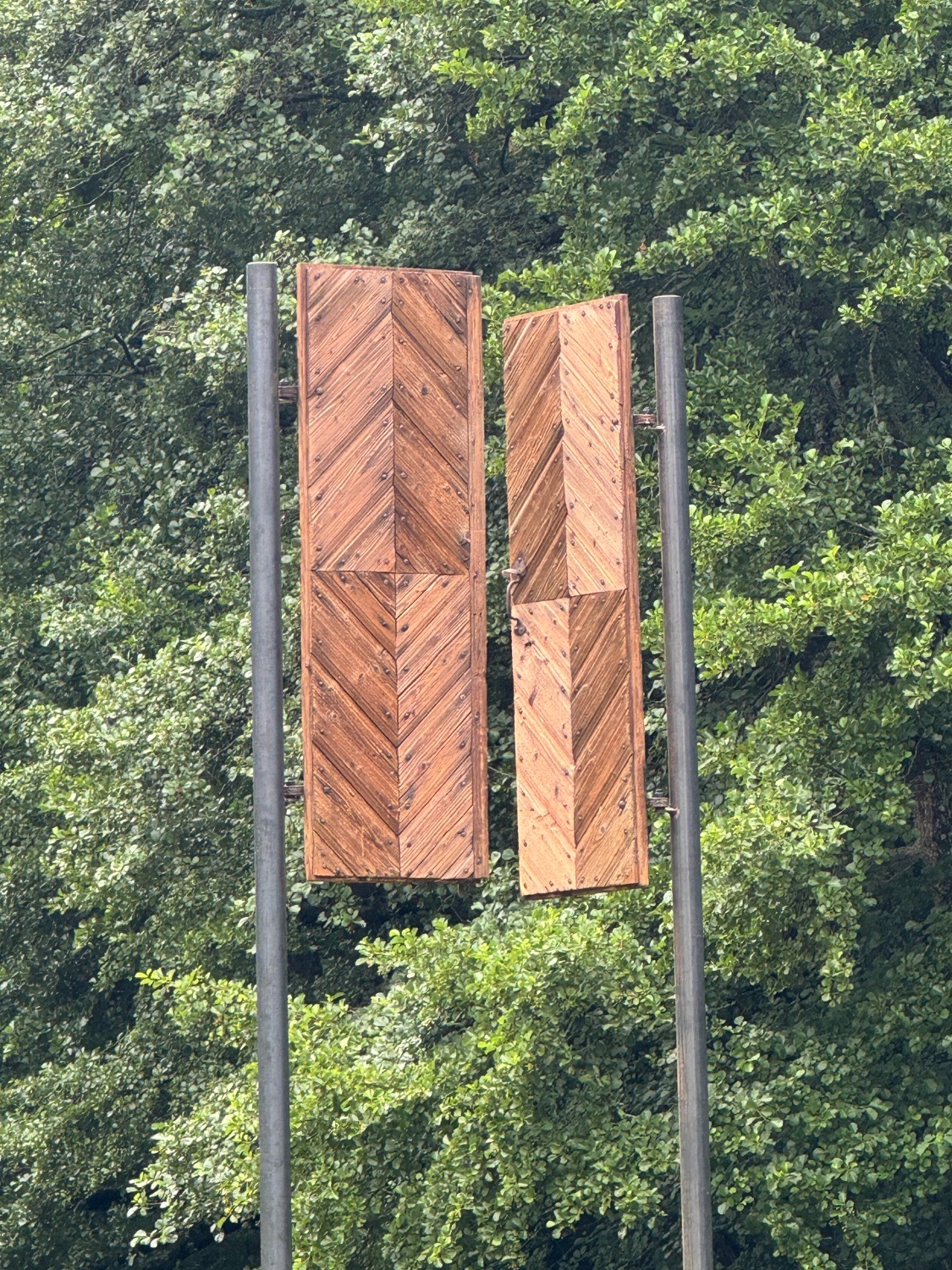
Similarly, in the Western Romantic and mystical tradition, William Blake (1757–1827) expresses the symbolic function of doors as mediators between perception and reality. In his work The Marriage of Heaven and Hell (1790) he writes: “If the doors of perception were cleansed every thing would appear to man as it is, Infinite.” For Blake, perception is veiled by the sediment of habit, doctrine, and error. The doors must be cleansed, not destroyed, implying that the obstacle lies in the perceiver, not in the perceived. This idea would later be taken up by Aldous Huxley in his mescaline-inspired book The Doors of Perception (1954) – Blake’s phrase becomes for him an epigraph and an organizing metaphor. Huxley invites the reader to consider that the brain functions as a “reducing valve” – also a kind of “door” that limits our consciousness for the sake of survival – and that psychedelic substances can temporarily open the “doors” which separate us from reality in its totality.
In both Daoism and Romanticism, doors are a metaphor for access to another mode of existence –one that is more fundamental than ordinary experience. The “gate of many wonders” in Daodejing, or the “cleansed doors of perception” for Blake and Huxley, do not simply indicate a change of place or consciousness – they describe an ontological act: an entry into an ultimate sphere.
Photo: Arterritory.com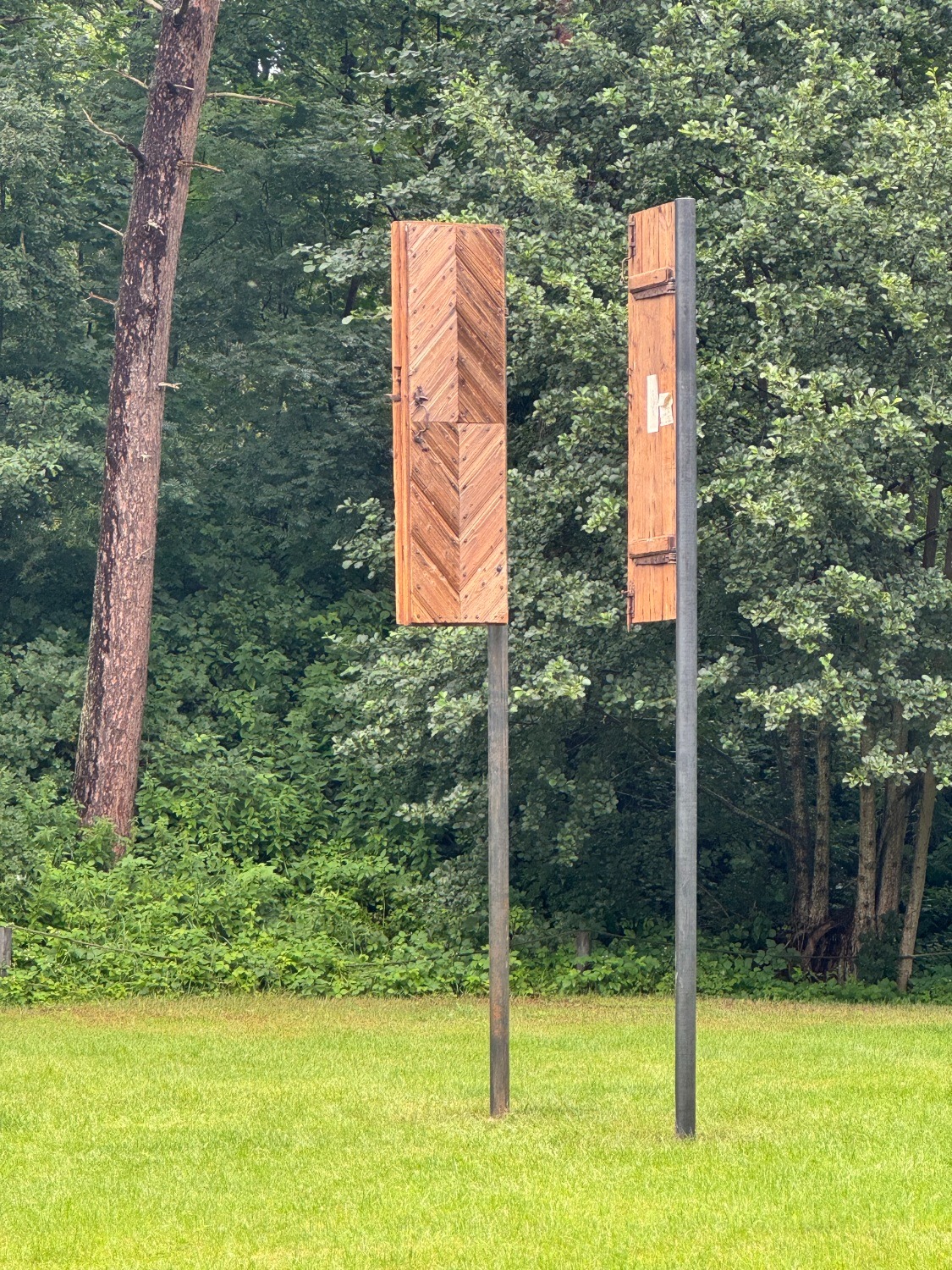
Yet doors do not only open. They also close. And they often require some condition in order to be opened. In religious traditions, this condition may be faith, purity, or numinous election. In mystical traditions – silence, self-emptying, or inner vision. In philosophical traditions – dialectical skill, ethical stance, or contemplative clarity. Gates thus function both as a symbol of boundary and of possibility. They are something to be approached with reverence and not to be forced without preparation.
Architecturally, doors are liminal (Latin limen, threshold) – they mark the end of one space and the beginning of another. Even in everyday experience we feel this. The moment before opening a door can be full of uncertainty – when knocking at a stranger’s door or standing before a closed office entrance. Doors register anticipation. They structure social roles and emotional states. An open door can mean hospitality, freedom, or danger. A closed door can protect or imprison.
The Latvian pagan tradition also preserves a rich symbolic vocabulary of doors and gates, especially in folk songs and traditional cosmology. The gates to the land of the dead are not merely grave markers but symbolic openings into a world that is invisible yet connected in its continuity with our own. Likewise, the wedding gates do not designate only an event but an existential passage – the bride and groom take a step into a new life, crossing a publicly marked threshold.
In all these examples, doors are never just a thing among things. They are a designation of passage, a ritual boundary, a symbolic operation, and a philosophical metaphor. Every culture answers differently to the same deep question: what lies on the other side of the door and who or what decides whether it will open.
Photo: Arterritory.com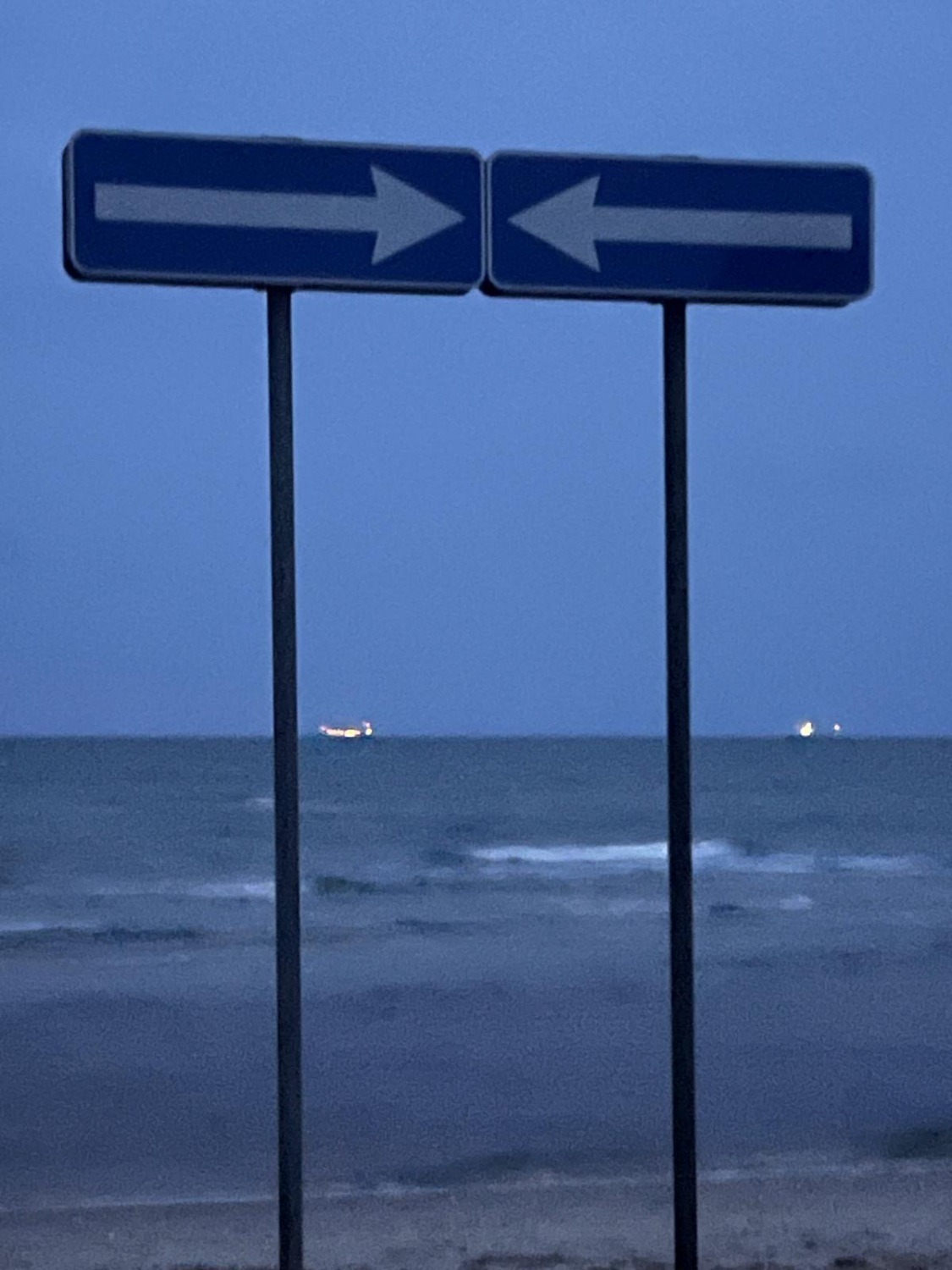
II. The Door as Boundary and Threshold
Every door is a boundary, but a paradoxical one. It separates and connects, excludes and invites, conceals and reveals. A door is not only a marker of division, but also a possibility of passage. Philosophically, this places the metaphor of the door within a broader category – the category of the threshold, which can be called liminal space: the space of an in-between state that symbolizes becoming and transition, rather than fixed being.
In this sense, doors become ritual instruments. They reinforce boundaries but also allow them to be crossed. In many traditional cultures, a person does not simply walk through a door – they must do so properly, with the aid of symbolic and ritual acts. In the Latvian wedding rituals, the bride crosses the wedding gates with singing and symbolic resistance, depicting the existential cost and seriousness of this passage. In the Japanese Shinto shrines, the torii gates mark the entrance to sacred space – a transition from the profane to the spiritual territory. In Roman religion, Janus, whose name derives from ianua (door), is depicted with two faces: one looking forward – toward the future – and the other looking back – toward the past. He is the god of beginnings, transitions, and doors – a patron of liminality itself.
Doors differentiate between various regimes of passage: the open door as invitation, the closed door as mystery or resistance. Here doors are not merely physical thresholds but affective structures – they mark fear, curiosity, secrecy, hospitality, or exclusion. The mood of the threshold shapes the entire configuration of experience.
From all these examples emerges a shared symbolic logic: doors mark the possibility of transformation. Not every crossing changes us. But every change involves a crossing. Whether it is a rite of passage, a shift of consciousness, or a philosophical breakthrough, the movement from one state to another is almost always imagined and structured as the crossing of a threshold. Thus, doors are not simply things in the world. They are events, symbols, and structures of experience. They prompt rituals, they shape emotions, they provoke questions. To encounter a door – especially a closed door – is to encounter the boundary of the familiar. And to open it, knock upon it, or wait before it – is to submit to the logic of transition, to acknowledge that between one state and another there always exists a gap, a crossing, a gate.
Photo: Arterritory.com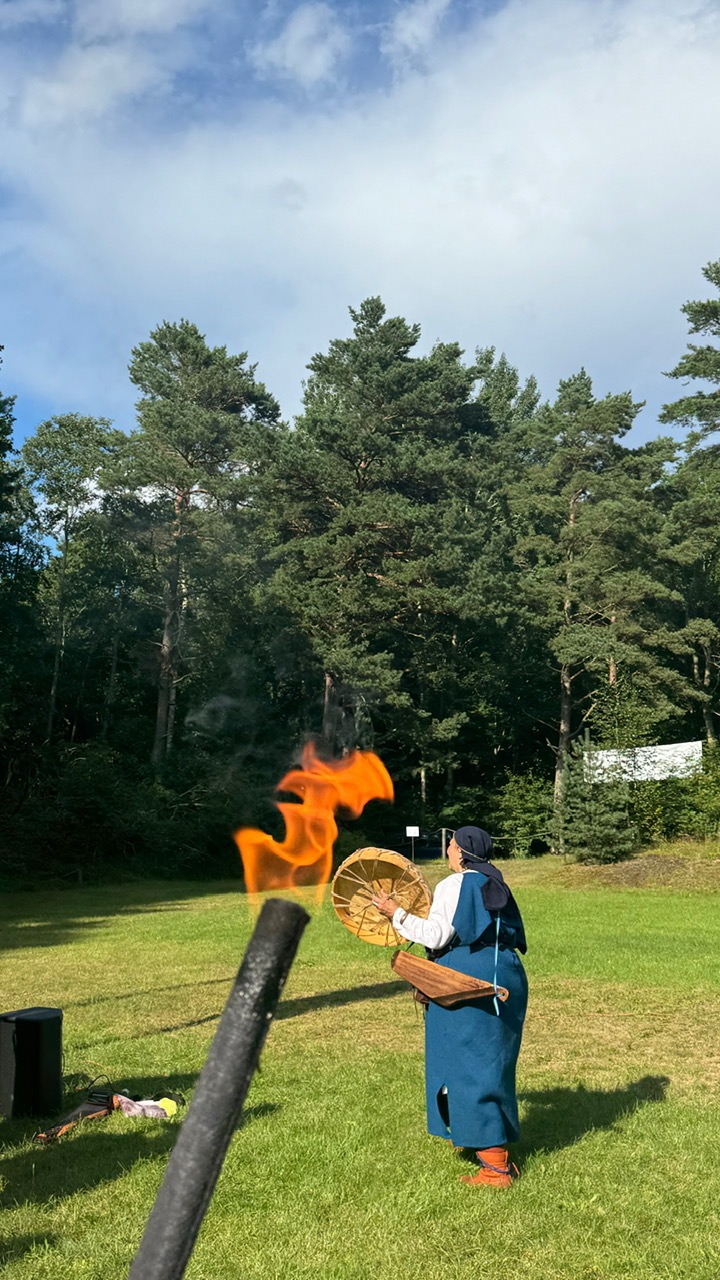
III. The Doors of Liberation
In Indian philosophical and spiritual traditions, the gate – dvāraṃ –appears as a powerful motif on several levels: metaphysical, epistemological, psychological, and soteriological. The word dvāraṃ derives from the root √dvṛ, meaning “to hinder, to cover,” and in Sanskrit it usually denotes a door, gate, or opening. Yet in classical literature and religious practice it acquires a broader meaning than mere passage in physical space. It becomes a symbol of the point of entry into reality – both in the sense of perception and in the sense of liberation. The gates are not merely architectural –they are ontological ‘openings’ through which one may enter the divine, the self, or the inner source of consciousness.
In the Bhagavadgītā, Kṛṣṇa uses the metaphor of dvāraṃ to describe the relationship between the body, the senses, and the self. The yogin is depicted as one who is “Closing all the gates of the body, and confining the mind in the heart, having placed the vital breath in the head, Established in yoga concentration,” (Bhagavadgītā 8.12). The body is portrayed as a gate-structure – each sense organ is a point of entry through which the external world flows into the mind. The natural condition of human beings is to look outward, through the sensory gates; only the resolute, the conscious, turn inward, reverse the stream, and perceive the true self. This shift of orientation – from outer to inner, from multiplicity to unity – is a philosophical act: “closing the doors of the world” in order to “open” the inner gates to reality.
The Indian Buddhist tradition posits three gates (trividha-dvāra): body, speech, and mind. These are also the three modes of activity – deeds, words, and thoughts – that must be guarded and purified. Since sentient beings are under the power of 84,000 delusions, the Buddha offers 84,000 methods – the ‘dharma gates’ – for dealing with them.
Yet all this imagery returns to one central soteriological insight: liberation requires a passage. One cannot remain forever on the threshold. The doors of the senses, of ignorance, and of bondage, the leaks of mental defilements must be closed. This transition demands effort, inner work – in other words, yoga, which is “skill in action” (Bhagavadgītā 2.50) and “the dissolution of union with pain” (Bhagavadgītā 6.23). Thus, in Indian thought, the gate is not an externally imposed obstacle. It might be looked upon as the very dynamic of consciousness – the structure through which the individual orients itself in embodiment, perception, attachment, and release.
Photo: Arterritory.com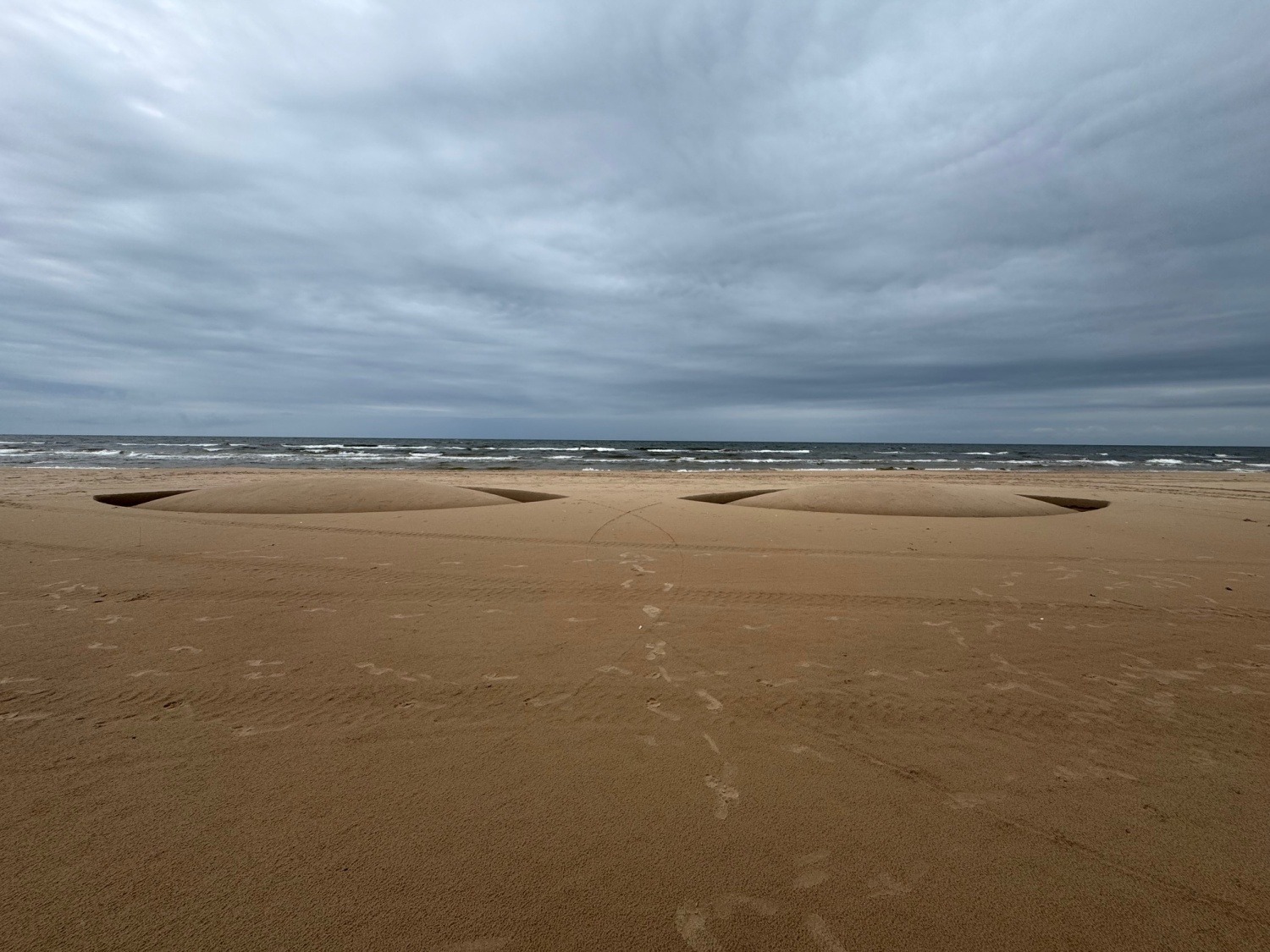
IV. The Gates of the Wonderous
In Chinese philosophical and spiritual imagination, the sinograph 門 (men) – meaning “gate” or “door” – functions not simply as an architectural object, but as “metaphysical hinges” connecting different spheres of existence, stages of self-cultivation, and levels of reality. Etymologically, the graph 門 is a pictogram: it depicts two swinging doors within a rectangular frame – a form that immediately suggests openness and closure, duality and transition. This visual simplicity conceals a rich layering of meanings, especially in Daoist and Buddhist traditions, where it becomes a symbol of passage between the visible and the hidden, the manifest and the mysterious.
Philosophically the most significant and most often cited occurrence of men appears in the opening chapter of the Daodejing, where the dao is described as an inexpressible process – “The dao that can be spoken of is not the constant dao.” The dao is the “mystery upon mystery” and “the gate of many wonders” – the origin ‘portal’ from which all things in the world emerge. These are not gates among others; they are the gates of reality itself. Thus, here the gate is not a physical structure, but a metaphor for an ontological threshold between the ineffable source and its differentiated manifestations.
The metaphor of closing the gates is as significant as that of opening them. Chapter 56 of the Daodejing states: “Block the openings, shut the gates; blunt the sharpness, untangle the knots, soften the glare, merge with the dust – this is called the mysterious unity.” This enigmatic fragment offers an entire spiritual method: silence, concealment, softening, and merging. The phrase “shut the gates” is a call to halt the leakage of vitality through the senses and through speech –for the sense-saturated modern person, it is akin to a call to observe a fast of the mind, refraining from overfeeding oneself with impressions. “Closing the gates” is not suppression, but cultivation. In closing the gates, one returns to oneself, toward the “mysterious unity” that is unity beyond superficial differences: unity of the being and nothingness. The gate becomes a turning point – not one to be forced open, but one to be held in balance, even in secrecy, until it opens of itself.
In the Chinese Buddhism, especially in the Awakening of Faith in the Mahāyāna treatise, the metaphor of doors and gates is used to express the ultimate and conventional truth. Two fundamental gates are distinguished in the context of understanding mind and reality: the “gate of birth-and-death” (shengmie men) and the “gate of suchness” (zhenru men). These gates represent two modes of mental functioning: the “gate of birth-and-death” corresponds to the conventional world of phenomena with its impermanence and causal relations, while the “gate of suchness” points to the non-dual nature of reality. The path to enlightenment and awakening entails the recognition of the inseparability of these gates – they are two aspects of the same origin. The gate metaphor once again becomes the mediator of ontological passage. This non-dualism is central to the Chinese Buddhist logic: the gate is not a point of exclusion, but a place of simultaneity – both “gate of birth-and-death” and “gate of suchness” in every moment of consciousness. The practitioner’s task is to enter both gates at once – to dwell in conventional experience while at the same time recognizing its suchness.
Photo: Pauls Rietums
V. The Gates of Salvation
In the traditions of Judaism and Christianity, the image of the door or gate is a deeply saturated symbol – it denotes access to the divine, moral discernment, eschatological judgment, and the very structure of revelation. From the Garden of Eden to the gates of the heavenly Jerusalem, this motif recurs as a theological and architectural hinge between the sacred and the profane, between exclusion and salvation. In Christianity, the door becomes a Christological symbol: Christ himself becomes the gate, and the soul’s journey is described as a succession of thresholds – through sin, repentance, and grace.
In the Gospel of John, Jesus says: “I am the gate; whoever enters through me will be saved. They will come in and go out, and find pasture.” (John 10:10 NIV) Here, the gate is no longer a structure outside the divine – it is the divine itself. Christ not only opens access to God; he is the very access and threshold. In this logic, the gate is not static or merely protective. It is permeable, dynamic, offering entrance into safety and belonging. The gate and the door are symbols of an intense search, the ultimate culmination of the inner path toward God, for “ask and it will be given to you; seek and you will find; knock and the door will be opened to you. For everyone who asks receives; the one who seeks finds; and to the one who knocks, the door will be opened.” (Mat 7:7-7 NIV).
Yet not all gates are wide or welcoming. In the Sermon on the Mount, Jesus warns: “Enter through the narrow gate. For wide is the gate and broad is the road that leads to destruction, and many enter through it. But small is the gate and narrow the road that leads to life, and only a few find it.” (Mat 7:13) Here the “narrow gate” introduces a moral and spiritual tension. Although Christ is the gate of salvation, the path through it demands discipline, discernment, and effort. Thus, the gate has two poles: it is both freely given (grace) and hard to find (virtue). The act of entering is a paradox—a gift to be received in sincerity, and a test that cannot be faked.
Photo: Arterritory.com
The symbol of the door also appears in the context of spiritual practice when speaking of prayer – specifically, “when you pray, go into your room, close the door and pray to your Father, who is unseen.” (Mat 6:6 NIV) Depending on interpretation, parallels can be drawn with the closing of the senses – “the doors” – and inner concentration. In this way, Christian mysticism develops the symbolism of the door as an inner space. A well-known example is St. Teresa of Ávila’s Interior Castle (El Castillo Interior, 1577), in which the soul is envisioned as a castle with seven concentric “mansions,” each closer to the divine center. The way inward is the way of prayer – “the entry door to this castle is prayer and meditation” – of self-knowledge and humility, and a sequential passage through inner gates. Each “mansion” is an interior threshold. The outer gates are the senses and attachments; the inner ones lead to union with God.
Photo: Arterritory.com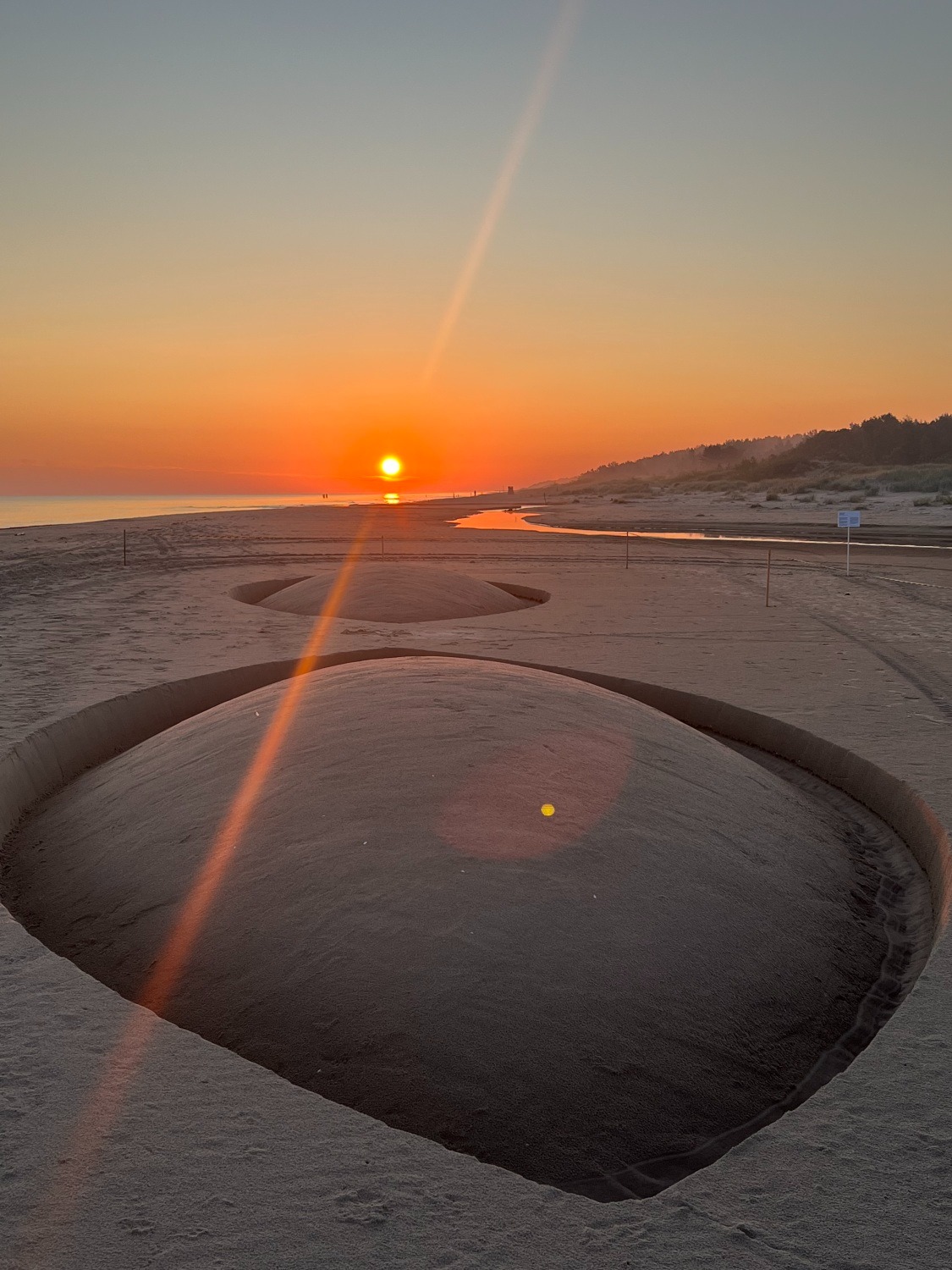
VI. Doors Between Worlds
In shamanic and Indigenous cosmologies around the world, the concept of the door or gate is rarely abstract or metaphorical in the modern philosophical sense. Instead, it is existentially embodied – through altered states of consciousness, ritual passages, and ecological symbolism. The world is perceived as interwoven with thresholds connecting the visible and the invisible. The door between worlds is not a simple passage, it is a place of transformation and a mode of access, through which only the initiated may enter.
A central structural element in shamanic worldviews is the axis mundi – the “world axis” or “cosmic pillar” that connects the heavens, the earth, and the underworld. It may manifest as a tree (for example, Yggdrasil in Norse mythology), a mountain, a ladder, a pillar, or a river. Each level of the cosmos functions as a gate that the shaman must pass. In some traditions, these gates are guarded by spirits or require secret words or songs to open. The cosmology is multilayered, and the passage must be earned through ritual purity, offering, and the power of vision.
In the Latvian folklore, gates are a central element of cosmological and ritual imagination. This appears most prominently in the concept of the veļu vārti (“gates of the dead”), which are symbolic and sometimes even physical portals through which souls pass to the veļu valsts, the world of the dead. These gates are often located near cemeteries, on hills, or in forests, and they are especially active during Veļu laiks, the autumn period when the boundary between worlds is at its most permeable. In wedding ritual, gates (vedību vārti) also appear, symbolically erected at the bride’s or groom’s home. The bride crosses these gates, often encountering singing, riddles, and symbolic resistance, thus marking the passage into a new identity. These are not thresholds of death, but of social metamorphosis – lived, collective, and poetic.
In many shamanic traditions, the threshold is guarded. To pass into another world requires an encounter with trickster spirits, animal companions, or gatekeepers. In Inuit tradition, for example, the shaman’s journey to the Sea Woman, Sedna – the mighty spirit who rules over the animals – requires entering a cave or an underworld gate, often blocked by a taboo or unresolved moral impurity. The gate opens only through confession, song, or offering.
In Siberian shamanic traditions, animals such as reindeer, bears, or eagles serve as psychopomps – spirit-guides – leading the soul through various passages. The shaman’s drum or drumstick may symbolize the key or the very passage into another world. In such cases, the door is not a simple spatial threshold, it is an ethical event. To cross, one must have the right offering, attitude, or knowledge.
In Indigenous and shamanic contexts, the state of consciousness itself is often the door. Entry into another world does not always require a physical place – access is determined by the state of body-mind. Through fasting, drumming, singing, or the use of sacred plants, the practitioner alters perception, allowing symbolic visions to mark the passage between worlds. The path must be navigated carefully. The gates are not always benevolent. In many accounts, an unsuccessful return can lead to madness, illness, or death. In these traditions, the door is not a right but a responsibility.
The doors between worlds in these traditions are not merely metaphors for inner psychological states, nor simply symbols of the transcendent in an abstract sense. They are embodied, situated, lived. They require song, offering, humility, and participation in a world that is always permeable and alive with relationships. To pass through the gate is to enter more deeply into reality – not to leave it.
Photo: Arterritory.com
VII. The Romantic and Psychedelic Turn
In the modern Western imagination, the symbolism of the door undergoes a deep inward turn. Whereas traditional religious and cosmological systems placed the door at the edge of sacred space or between life and death, modern thought – especially from the Romantic era onward – moves the door into the interior of perception and consciousness. The threshold becomes the boundary of the “self,” a filter of awareness, a gate between sensory experience and inexpressible reality. This transformation is deeply inscribed in the literary, visionary, and later psychedelic traditions of the 18th–20th centuries, culminating in a new phenomenology of entry, access, and opening that is at once spiritual and experimental.
We may recall here the line from William Blake quoted at the beginning: “If the doors of perception were cleansed every thing would appear to man as it is, infinite.” This often-quoted but rarely fully understood phrase expresses a radical insight: it is not the world that is hidden, but perception itself that has clouded the view. The door here is epistemological – a portal through which phenomena enter consciousness. But this portal is not a neutral channel; it is veiled by “the narrow chinks of our cavern,” a phrase reminiscent of Plato’s cave. To cleanse the doors means to remove distortions, allowing the infinite – the divine in all things – to shine through. Importantly, Blake’s doors are not a metaphor for escape, but an instrument of clarity. They do not lead away from the world, but reveal it as it truly is. Thus, Blake restores a mystical ontology within Romantic epistemology: the divine is here and now – if only we could ‘see’.
More than 150 years later, Aldous Huxley (1894–1963) took Blake’s phrase as the title and organizing principle of his The Doors of Perception (1954), in which he describes his mescaline experience. Huxley draws on the theories of Henri Bergson and C. D. Broad, who viewed the brain as a “reducing valve” – a biological mechanism not designed to reveal reality, but to filter it for the sake of survival. The doors of perception, then, are neurological, and the psychedelic experience temporarily lifts this filter, allowing the flood of being to break through. Under mescaline, as Huxley writes, “everything shone with an Inner Light and was infinite in its significance,” and objects (a chair, a flower, a piece of fabric) revealed their suchness, their numinous presence. The resonance with the Buddhist tathatā and Vedāntic Brahman is evident. Huxley also invokes mystical phenomenology. He cites Meister Eckhart and the Tibetan Book of the Dead not as exotic curiosities, but as texts describing altered states of consciousness that may be induced pharmacologically, meditatively, or spontaneously. For Huxley, the gates are both biological and spiritual – their opening is at once dangerous and revelatory.
Neuroscientific research on the effects of psychedelic substances on the brain provides empirical grounding to the metaphor of the doors of perception. Studies show that substances such as psilocybin, LSD, and DMT reduce activity in the brain’s Default Mode Network – a system associated with the sense of “self,” identity, and introspective thinking. When this network is hyperactive, it generates a cohesive sense of “I” and filters external stimuli. When it is suppressed – by psychedelic substances, meditation, or trauma – brain regions become more permeable, and new patterns of neural connectivity emerge. On the subjective level, this often produces experiences of ego dissolution, timelessness, and unity, described for centuries in mystical and shamanic literature. The doors of perception, once a poetic image, become a neuro-phenomenological fact. The gates are not merely a metaphor, they are measurable: a threshold regulated by serotonin receptors, cortical entropy, and attentional flexibility.
The 21st-century psychedelic renaissance, marked by renewed clinical, spiritual, and philosophical interest in entheogens, continues the tradition of the understanding of the doors as a site of transformation. Yet this experience is often reinterpreted through ritual and therapeutic frameworks. Many psychedelic reports feature the motif of “breaking through” or “crossing,” accompanied by visual metaphors: tunnels, doors, membranes. Set and setting – the psychological and environmental context – determines whether the door opens onto illumination or chaos, paradise or hell. The ritual use of ayahuasca, psilocybin, or LSD is often described as a journey—with a threshold marking departure, trial, and return. This mythic structure mirrors traditional initiations: the door is a rite, not a shortcut. Thus, modern thought preserves the ancient intuition: there are doors to other modes of being. Whether poetic, neurological, or mystical, the gates still serve as symbols of access and transformation. Yet one must approach the door with reverence, clarity, and care – for in crossing the threshold, it is not only the landscape that changes, but the person themselves.
Photo: Arterritory.com
VIII. Who Can Open the Gate?
In all the traditions examined so far – Indian, Chinese, Biblical, Indigenous, and Modern – the gate or door is never merely an object. It is also an event. A moment, a possibility, a tension between closure and passage, between here and there. But the gate does not open for everyone, nor at every time. It is selective. Dependent on conditions. Sometimes even sentient. Thus, another question arises—not “What is a gate?” but “What opens the gate?”
This question implies a deeper structure: the gate is not just a static threshold, but a dynamic relationship between two domains and the one who seeks to pass between them. In a philosophical sense, the gate has three modes: the inside, the outside, and the crossing. And this third – the act of crossing – is always bound up with transformation. The one who returns is never the same.
Across spiritual and mystical traditions, one recurring condition for the opening of the door is disposition. Whether described as śraddhā (“faith”) in the Bhagavadgītā, kavanah (“intention”) in Jewish prayer, or niyyah (“purpose”) in Islamic practice – the seeker’s inner state is often what enables the possibility of entry. The gates of the numinous world do not yield to force. They open to sincerity, attunement, emptiness, or humility.
The gate also demands ritual. In shamanistic and animistic traditions, the crossing of sacred thresholds – sweat lodge rites, gates of the dead, gates of initiation – is marked by symbolic acts. These are not optional performances, but cosmic formulas: songs, offerings, fasts, purification rituals that align the practitioner with the deeper order of things. Philosophically, the ritual teaches that not all openings occur by chance. They require a form – a behavioral pattern that resonates with the structure of the cosmos.
Yet not all gates are meant to be opened. And not all seekers are ready. Many traditions warn of the danger of premature crossing. In shamanic narratives, entering another world without proper guidance can lead to madness or the loss of the soul. As Huxley acknowledged, even the reduction of neural filters (for example, the suppression of the DMN during psychedelic experience) does not guarantee truth or healing. What one sees through the open gate depends on the one who sees. The key lies not in the substance, but in the structure itself.
In all cases, the gate functions not merely as a division, but as an opportunity. It is the point at which structure yields to transformation. Where the known collapses into the new. The conditions that open such a gate vary: silence, sincerity, shock, sacrifice, surrender, slowness. But in all traditions, one pattern remains: you cannot remain the same. To cross the gate is to become someone – or something – else.
Photo: Arterritory.com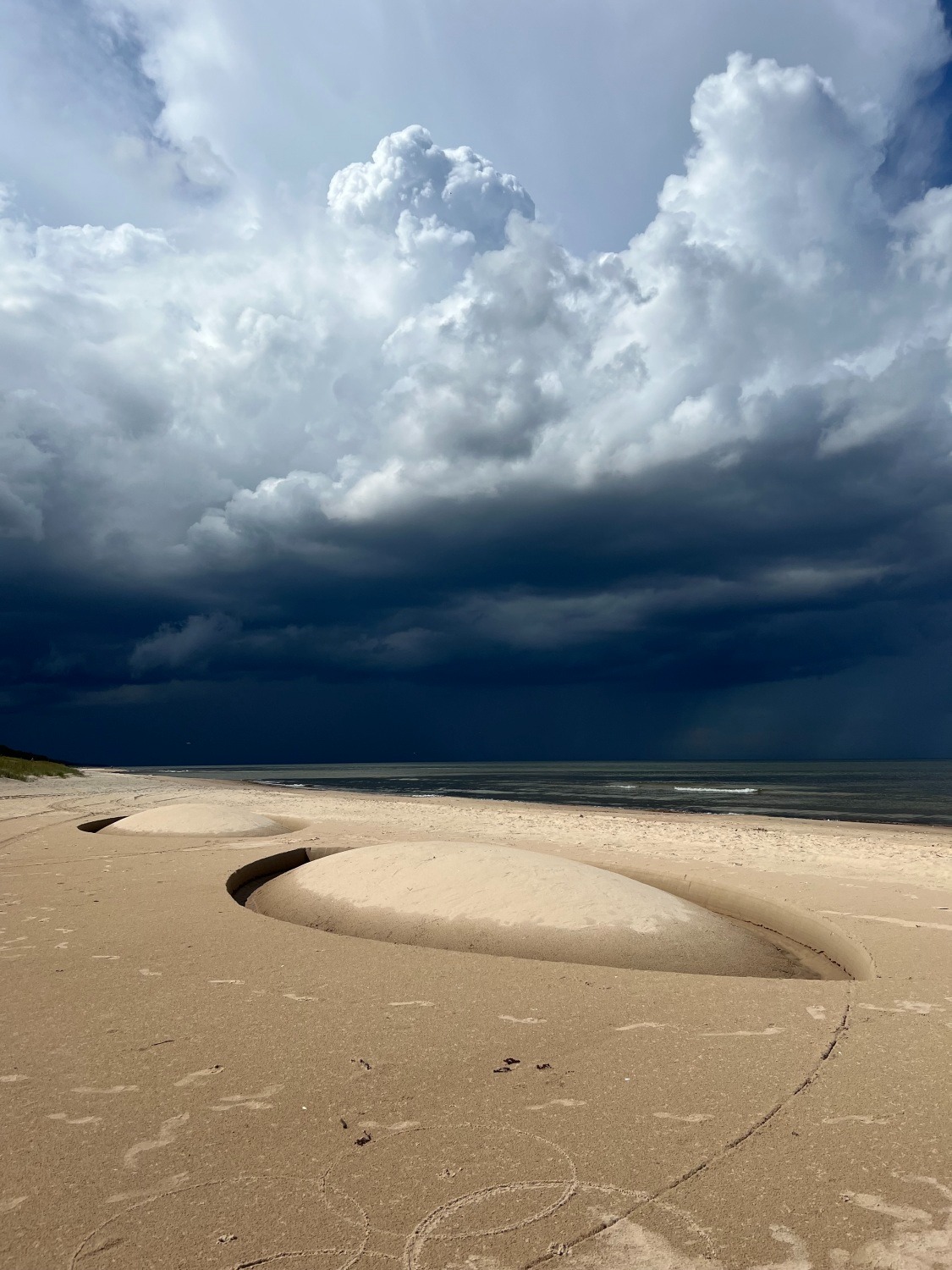
IX. Conclusion – The Infinite Doors
We began with the observation that doors are never merely physical structures. They are symbols, events, passages, and, in their deepest sense, questions. They ask not only what lies beyond, but also: “What must be transformed in me so that I may cross the threshold?” In our journey through Indian, Chinese, Biblical, Indigenous, and Modern perspectives, we have seen that doors or gates are always more than they appear at first glance. They are patterns of thought, thresholds of being, hinges in the very structure of reality.
And yet – no matter how many doors we might list, no matter how carefully we might follow the metaphors – the gates of ultimate reality remain mysterious. In Daoist thought, the “mystery upon mysteries” is not a riddle to be solved, but the condition for all phenomena. The gate of many wonders is not an endpoint; it is the very act of the world’s appearing.
In Indian philosophy, the gate is that through which the One becomes the many, and the narrow path by which the many return to the One. In Christian mysticism, the heart becomes the door, and Christ the gate. In Indigenous thought, it is ecological, seasonal, and cosmic. In every tradition, the threshold is a moment of transformation.
In modern thought, the metaphor becomes intimate, embodied, and neurological. In William Blake’s poetic vision, infinity is not somewhere far away – it is what becomes visible when the doors are cleansed. As he writes in Auguries of Innocence:
“To see a World in a Grain of Sand,
And a Heaven in a Wild Flower,
Hold Infinity in the palm of your hand,
And Eternity in an hour.”
And these, perhaps, are the final doors: doors that are already open, already here, already within us, but hidden by the habits of perception. They do not lead outward. They lead deeper into the inwardness, until it reveals its infinity. The threshold is not “there.” It is now. And the act of opening is not a grand mystical achievement, but a subtle shift: listening, waiting, allowing to be. What Blake calls “cleansing” is this quiet act of attunement. It is not the world that must change, but the one who looks.
So – what opens the gate? Sometimes a knock. Sometimes a fall. Sometimes – nothing but attention. But it always requires of us a small death: of certainty, of ego, of haste, of grasping. And in return it offers not answers, but presence. Not escape, but depth. Not another world, but the radiance of this one when it is seen as if for the first time.
Perhaps we, too, stand before such gates: the gates of hearing, of recognizing the unseen connections that bind all things. Gates that open when we ask: “What else is here that I have not yet seen?” These gates do not close behind us. They remain open – not to the eyes, but to the attuned heart, to complete silence, to the graceful step forward.
Photo: Arterritory.com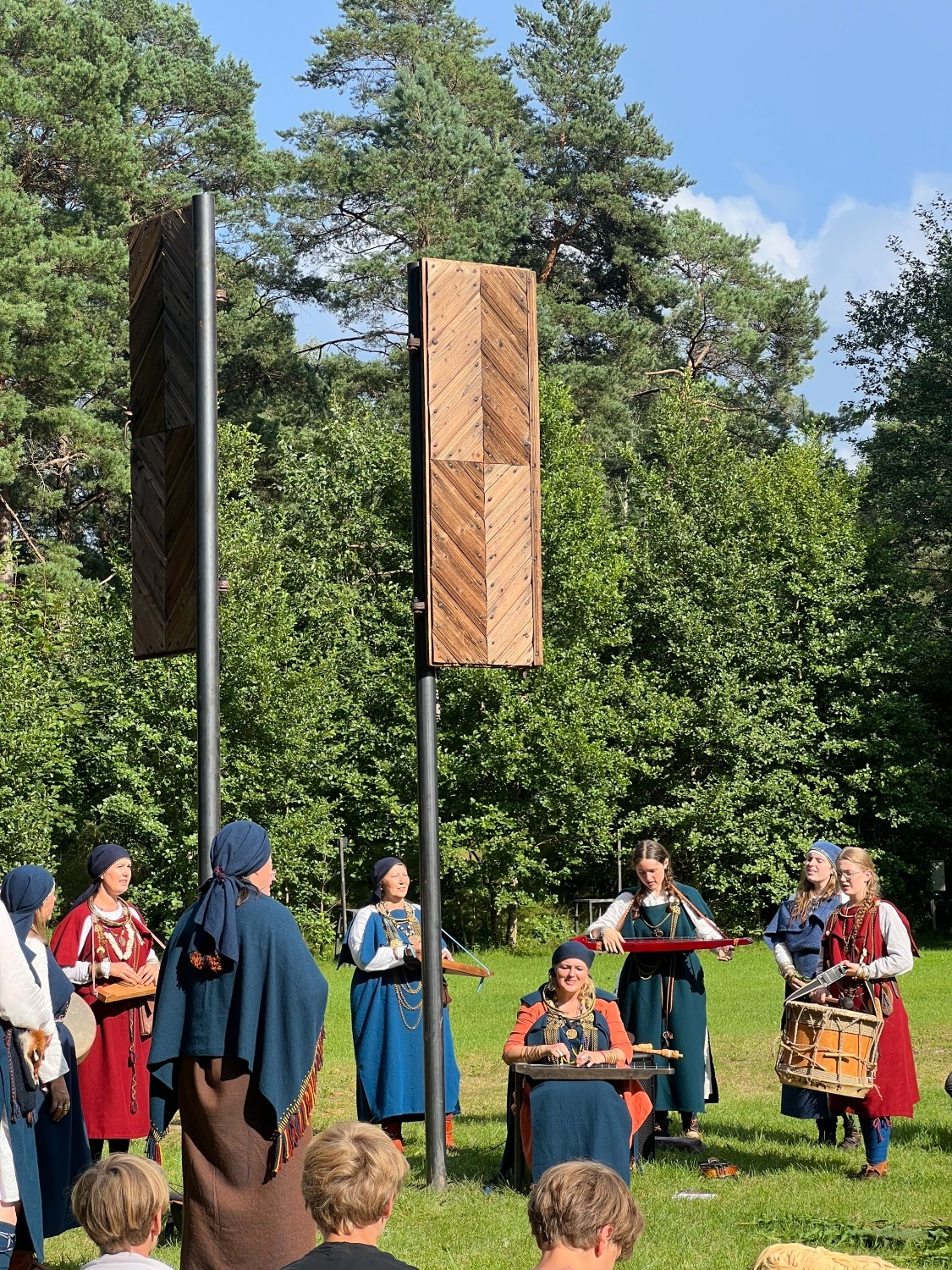
***
Kaspars Eihmanis' reading took place on Saturday, August 2, at the Saulrietu Concert Meadow in Mazirbe, as part of the DURVIS project (on view until August 18th, 2025)—a collaboration between Arterritory.com, Julgī Stalte, and the Mazirbes Kultūrtelpa association. Special thanks go to artists Dainis Pundurs and Reinis Dzudzilo, as well as the folklore group Skandinieki.
Kaspars Eihmanis is a philosopher, Buddhologist and sinologist. He holds a PhD in Philosophy from National Taiwan Genji Chengchi University, defending his thesis on the concept of memory in Indian Buddhist philosophy of consciousness. He taught Chinese language, Chinese history and philosophy at the Department of Asian Studies, University of Latvia. His research interests include Buddhist philosophy of consciousness, Taoist philosophy and confluence philosophy. He has spent a quarter of his life in Asia, examining philosophy in a cross-cultural context.